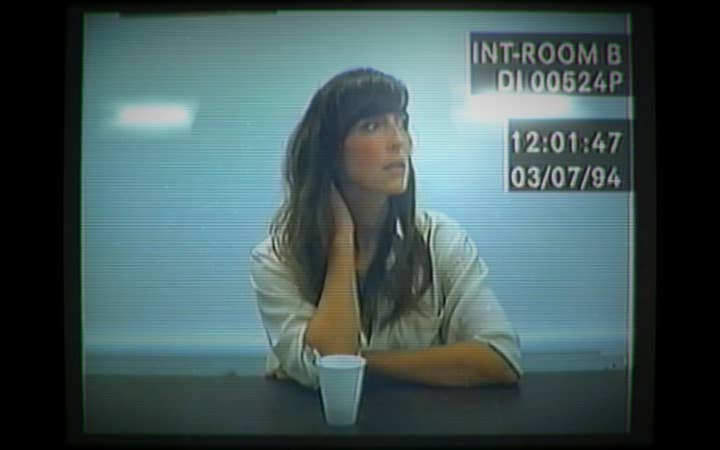The death and rebirth of FMV in games
Claire Wingate, Director of Production at Pulse Films, looks at why FMV in games is making a comeback
Among my memories of gaming's early transition beyond 2D visuals are two moments. The first: the commercial for Final Fantasy VII. The other: Mark Hamill talking to a man in a giant cat suit during the full-motion video opening of Wing Commander III: Heart of the Tiger.
Rewatching these scenes today, both look cheesy and outdated. But only one looks ridiculous, and it kills me that it's not the one with the rhombus-shaped characters. How can the game with Malcolm McDowell, John Rhys-Davies, and Luke Skywalker be the more hilarious thing to look at two decades later?
There's a concept in aesthetics called the uncanny valley: as objects and images become more recognizably human, our minds generally feel greater affinity for them, but there's a limit at which something is so humanlike but still minutely imperfect that we reject it entirely. As artists, we have the opportunity to connect to audiences on either side of that divide. But after a brief flirtation in the '90s, gaming mostly gave up one side of the valley: live-action FMV.
That's a shame. The original Resident Evil didn't kill voice acting in games. Terrible scripts and localizations didn't kill storytelling. And yet a multitude of factors killed live-action video. The quality of those first efforts bears some of the blame. Institutional bias was important, as well - of course programmers and technical artists were going to lean toward the style their professional and social networks lived in. FMV just looked bizarre, too - low-resolution video on green screen meshed poorly with where their accompanying graphics were at the time.
But maybe the biggest mistake was giving visuals and computer imagery undue weight in defining the way forward for gaming. There was a weird belief in the '90s that cutscenes were some breakthrough invention - that they were the future of entertainment. Square Pictures was going to replace Hollywood actors with hyper-real facsimiles. Games were going to become interactive movies. Gameplay and cinematics became competing concepts in a way. Live-action, still in its infancy, got roped into and drowned out in that awkward period, and it's only now that it's starting to creep back.
"The industry is at a place now where we can celebrate artistic choices that do things differently, and that's a better environment for live-action to return to"
The effects of this have been incalculable. There is a fundamental challenge at the heart of the uncanny valley: "Is this convincing?" And pushing the heights of realism in 3D CGI has become a game of multi-million-dollar inches, with each percentage earned running costs exponentially higher. That's a perfectly fine stylistic choice. But it isn't the only solution. L.A. Noire and Her Story both do exceptional things with the crime genre, but the practical differences in how they reach a similar place are worlds apart. Actors can quickly adjust between takes, cameras can be easily moved, scripts can be rewritten, characters can be explored and defined further... all on the spot.
That isn't to say FMV is inherently cheaper or superior. The live-action pieces for the new Need for Speed took only a few days to shoot - and within that time, we could make adjustments to actors, settings, and performances in ways that might have taken animators weeks. But getting it all in game, from planning to execution to editing, took well over five months. FMV offers affordability and flexibility under certain circumstances, depending on what you want your game to achieve - but bridging the continuity between FMV and graphics can still be a long, costly undertaking, and if done poorly, can prove disastrous for the final product.
So what's changed, and why will this moment be different? Well, for starters, the war is over. Meryl Streep continued to be gainfully employed after Final Fantasy: The Spirits Within. Cutscenes and QTEs became more prominent, but by no means dominant. The industry is at a place now where we can celebrate artistic choices that do things differently, and that's a better environment for live-action to return to. Having been gone for so long, FMV feels refreshing again, and I can't overstate how strong a re-legitimizing influence games like Her Story, Contradiction - Spot the Liar!, and Tesla Effect: A Tex Murphy Adventure have had.

The industry has evolved, too, mostly for the better. FMV in the '90s was often cheesy and cheap, but so were many games themselves. That's less the case now, and rising expectations of quality from indie titles to AAA lend themselves to more capable, purposeful uses of live-action. We've learned from the spectacular failures that can occur when developers try to isolate graphics from gameplay. Our work with the developers of both Guitar Hero Live and Need for Speed started from a shared belief that game and visual design must inform and support one another.
So much of the challenge facing live-action FMV has been exposing gamers to enough of it to make them feel comfortable with it, and live-action game trailers have done a lot of heavy lifting in this regard. They've consistently demonstrated that game worlds can translate meaningfully from CGI when given appropriate talent and resources. It's important that we can put a real, live Master Chief in a primetime TV ad and have it not feel like a joke. It gives that property more freedom in how it presents itself to audiences. Even we were surprised with how immediately players as a whole seemed to embrace the radically new, live-action direction of a previously established experience like Guitar Hero Live; I think it speaks to a major shift in audiences' comfort level with FMV in games.
Going forward, more than anything, FMV in games needs time. It's as experimental a feature today as it was when it first arrived. We've had voice acting in games for decades now, and even that can still be hit or miss. The industry has a lot of catching up to do. But that catching up is important. There's an entire world of creative and financial possibilities on the other side of the valley that we've only just started to explore once more.
Pulse Films is an award-winning production and talent management company with roots in film, television, gaming, music videos, commercials, and more, including the award-winning, interactive music video for Bob Dylan's "Like a Rolling Stone." Pulse has contributed to the live-action production of Guitar Hero Live and Need for Speed.








